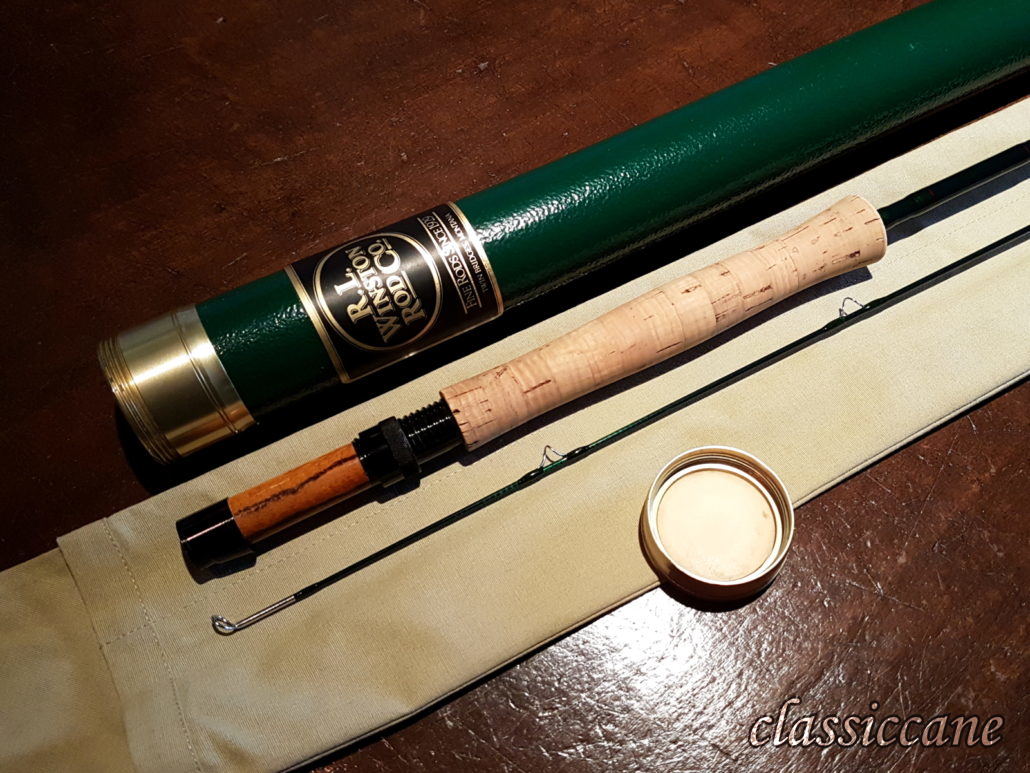

Who built the machines to build the rods and supported his family those first few years selling only about twenty rods a year. A man who invented many of the machines and processes still used in rod making. A man who started a fishing rod company in 1929, the year the Great Depression began.

He is intense and there is a sadness about him. You see him, his back bent from labor, working over a machine. There is something haunting about this man who never looks at the camera. None of them are more striking than the images of Lew Stoner, co-founder of Winston. Photos of men who shaped fly fishing as we know it and most recently a photo of Annette McClean. Old machinery and hand tools from the company’s early days line the walls. Glass cases hold old bamboo rods, many with world records attached to them. Winston is one of the oldest and most storied brands in fly fishing, so it’s fitting that when you walk through the front door you find yourself in a museum. The kind of place where your work ethic matters more than your resume and before long Annette McClean found herself in charge of operations, and then design. It’s the kind of place where if you do your job well, you get more responsibility. They are expected to do it, and what’s more they are expected to take it back to the person responsible for the imperfection. Any employee can, at any time, take any part out of production if they find it to be anything other than perfect. Winston is the kind of place where employees take pride in their work and feel an ownership in it. She enjoyed the work and before long Annette was doing a couple of other jobs around the plant, including working on bamboo rods with Glen Bracket. Not a glamorous position but she didn’t care. The job was polishing reel seat hardware, and she took it. “No,” Tom replied, “But I’ve got a job for you if you’re interested.” She was there to ask then owner, Tom Morgan, if he’d sell a piece of land. She wasn’t looking for a job, or even a fly rod. “I never felt devalued at Winston because I was a woman,” she tells me.Īnnette was working for a local conservation organization in the 1980s when she walked through the front door of the R.L.Winston Fly Rod Company. There is a rich history of women in the fly fishing industry and though she is the first to hold this position, I’m sure she will not be the last.

Not that it matters and it certainly doesn’t to Annette. As far as I know, she is the only woman rod designer period. There’s no point in writing around it, Annette is unique in that she is the only woman to design fly rods for a major manufacturer. As it happens, Annette is also one of the most brilliant minds in fly rod design. She is those things, as well as being a great angler, a good friend and civicly involved neighbor. If you saw her at the grocery store you might think of her as someone’s mom, or grandmom, and you’d be right. Soft spoken, humble, completely unassuming and a bit on the quiet side, with short silver hair and perfect posture, Annette McClean doesn’t immediately stand out in a crowd. She is serious, thoughtful, and when she speaks she gets straight to the point. You wouldn’t be the least surprised to see her saddle a horse or mend a fence. Raised on a Montana ranch with five brothers, she stands as if she were always ready to get to work. The kind of quiet, earnest character Gary Cooper played in his old westerns. By Louis Cahill If she was a man, she might have been a cowboy.


 0 kommentar(er)
0 kommentar(er)
